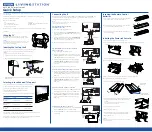
Introduction
1.3 Characteristics
SIPROTEC, 7SD80, Manual
E50417-G1140-C474-A1, Release date 09.2011
25
Voltage Protection
• Overvoltage and undervoltage detection with different elements
• Two overvoltage elements for the phase-to-ground voltages
• Two overvoltage elements for the phase-to-phase voltages
• Two overvoltage elements for the positive sequence voltage
• Two overvoltage elements for the negative sequence system of the voltages
• Two overvoltage elements for the zero system of the voltages or for any other single-phase voltage
• Adjustable dropout conditions
• Two undervoltage elements for the phase-to-ground voltages
• Two undervoltage elements for the phase-to-phase voltages
• Two undervoltage elements for the positive sequence system of the voltages
• Adjustable current criterion for undervoltage protection functions
Frequency Protection 81 (Optional)
• Monitoring of falling below (f<) and/or exceeding (f>) with 4 frequency limits and time delays that are inde-
pendently adjustable
• Particularly insensitive to harmonics and abrupt phase angle changes
• Wide frequency range (approx. 25 Hz to 70 Hz)
Automatic Reclose Function (Optional)
• For reclosing after 3-pole open condition
• Two reclosing attempts
• With separate action times for each reclosing attempt, optionally without action times
• With separate dead times
• Optionally controlled by protection element pickup with separate dead times after 1-pole, 2-pole or 3-pole
pickup
Monitoring Functions
• Reliability of the device is greatly increased because of self-monitoring of the internal measurement circuits,
the auxiliary power supply as well as the hardware and software
• Monitoring of the current transformer and voltage transformer secondary circuits using summation and sym-
metry check techniques
• Monitoring of communication with statistics showing the availability of transmission telegrams
• Check of the consistency of protection settings at both line ends: no processor system start-up with incon-
sistent settings which could lead to a malfunction of the differential protection system
• Trip circuit monitoring possible
• Check of local and remote measured values and comparison of both
• Broken wire supervision for the secondary CT circuits with fast phase segregated blocking of the differential
protection system in order to avoid malfunction
• Supervision of measuring voltage failure using "Fuse Failure Monitor"














































